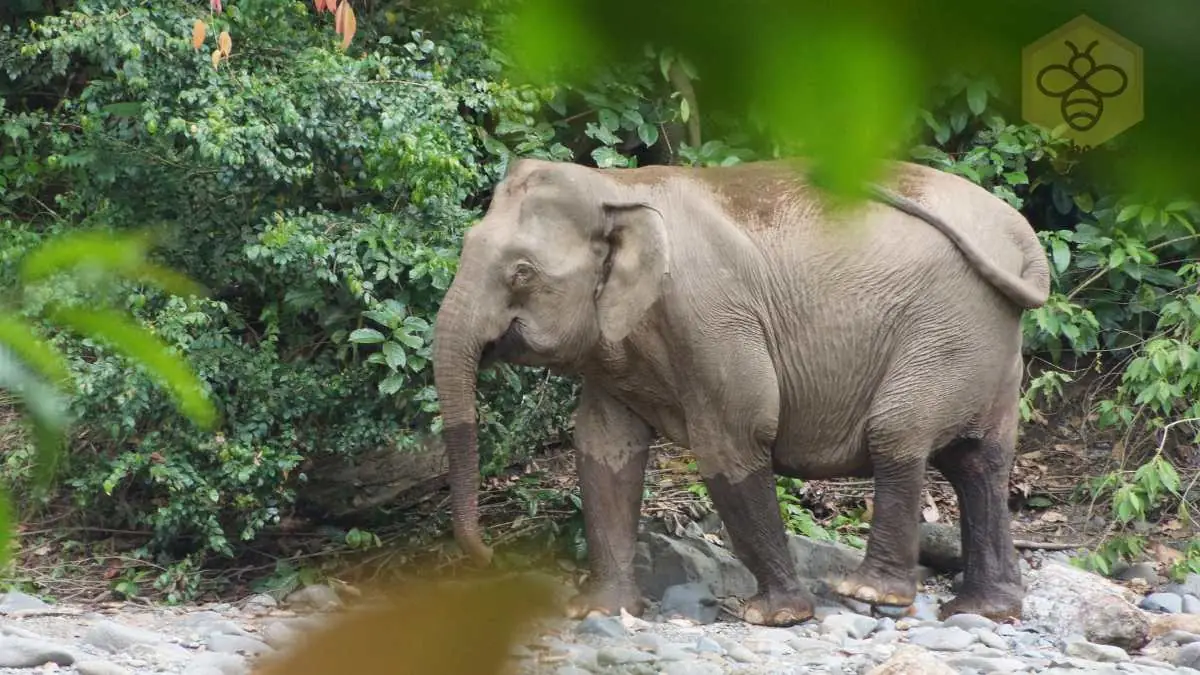Borneo Elephant: The Gentle Giants of the Rainforest
Borneo Elephant
Introduction
The Borneo elephant, also known as the Bornean pygmy elephant, is one of the most unique and fascinating elephant species. Found only on the island of Borneo, these gentle giants are known for their smaller size, long tails, and docile nature. Despite their charm, Borneo elephants face significant threats in the wild, making conservation efforts crucial for their survival.
Scientific Overview
Scientific Name
The scientific name of the Borneo elephant is Elephas maximus borneensis.
Common Name
These elephants are commonly called Borneo elephants or Bornean pygmy elephants.
Scientific Classification
| Kingdom | Animalia |
| Phylum | Chordata |
| Class | Mammalia |
| Order | Proboscidea |
| Family | Elephantidae |
| Genus | Elephas |
| Species | maximus |
| Subspecies | borneensis |
Types
Borneo elephants are a subspecies of the Asian elephant (Elephas maximus). While they share similarities with other Asian elephants, they are distinct due to their smaller size and unique physical traits.
Habitat and Distribution
These elephants are found only in the northeastern regions of Borneo, mainly in the Malaysian state of Sabah and parts of Indonesia’s Kalimantan region. They prefer dense lowland rainforests, river valleys, and swampy areas with abundant food and water. However, deforestation and habitat fragmentation have forced them into smaller, more isolated areas.
Physical Characteristics
Size and Weight
Borneo elephants are the smallest subspecies of Asian elephants, growing between 2.4 to 3 meters (8 to 10 feet) in height at the shoulder. They weigh between 2,000 and 3,000 kilograms (4,400 to 6,600 pounds), making them smaller and lighter than their mainland relatives.
Appearance
These elephants have rounder faces, straighter tusks, and longer tails that often touch the ground. Their ears are also slightly larger compared to other Asian elephants, giving them an adorable, baby-like appearance even in adulthood.
Diet and Feeding Habits
Borneo elephants are herbivores and consume a diet of grasses, leaves, fruits, and tree bark. They need vast amounts of food daily—up to 150 kilograms (330 pounds)—to sustain their massive bodies. They also drink large quantities of water and are often seen near rivers or swampy areas.
Predators and Threats
Adult Borneo elephants have no natural predators, but their calves can be vulnerable to large carnivores such as clouded leopards. The biggest threats to their survival come from human activities, including:
- Deforestation: Large-scale logging and palm oil plantations have significantly reduced their habitat.
- Human-Elephant Conflict: As forests shrink, elephants wander into farmland, leading to conflicts with local communities.
- Poaching: While not as heavily targeted as African elephants, some Borneo elephants fall victim to illegal hunting.
Reproduction, Babies, and Lifespan
These elephants have a long gestation period of about 22 months, after which a single calf is born. The mother cares for her calf with the help of other females in the herd. Calves stay with their mothers for several years before becoming independent. These elephants have a lifespan of 50 to 70 years in the wild.
Population and Conservation Status
The Borneo elephant population is estimated to be fewer than 1,500 individuals, making them endangered. Conservation efforts are focused on habitat protection, reducing human-elephant conflict, and anti-poaching measures. Organizations such as the World Wildlife Fund (WWF) are working to protect these unique elephants and ensure their survival.
Behavior and Lifestyle
These elephants are highly social animals, living in matriarchal herds led by an older female. They communicate using vocalizations, body language, and seismic signals that can travel long distances through the ground. Unlike some other elephant species, they are known for their calm and gentle nature.
Ecological Role
As ecosystem engineers, Borneo elephants play a crucial role in maintaining forest health. They help disperse seeds through their dung, creating new plant growth and maintaining biodiversity. By clearing paths through dense vegetation, they also create access routes for smaller animals.
FAQs About Borneo Elephants
1. Why are Borneo elephants smaller than other elephants?
Scientists believe Borneo elephants may have evolved to be smaller due to island dwarfism or could be descendants of a domesticated elephant population introduced centuries ago.
2. How do Borneo elephants communicate?
They use a combination of sounds, infrasound vibrations, and body movements to communicate with each other.
3. Are Borneo elephants different from Asian elephants?
Yes, They are a subspecies of Asian elephants and are smaller, with longer tails, straighter tusks, and a more docile nature.
4. What is being done to protect Borneo elephants?
Conservation efforts include protecting forests, reducing conflicts with farmers, and raising awareness about their endangered status.
5. Can They be found in zoos?
They are rarely found in zoos outside their native habitat, as conservationists focus on protecting them in the wild.
Conclusion
The Borneo elephant is a unique and gentle giant that plays an essential role in its rainforest habitat. However, human activities threaten its survival, making conservation efforts more critical than ever. By protecting these elephants and their environment, we ensure that future generations can continue to admire these incredible creatures in the wild.
